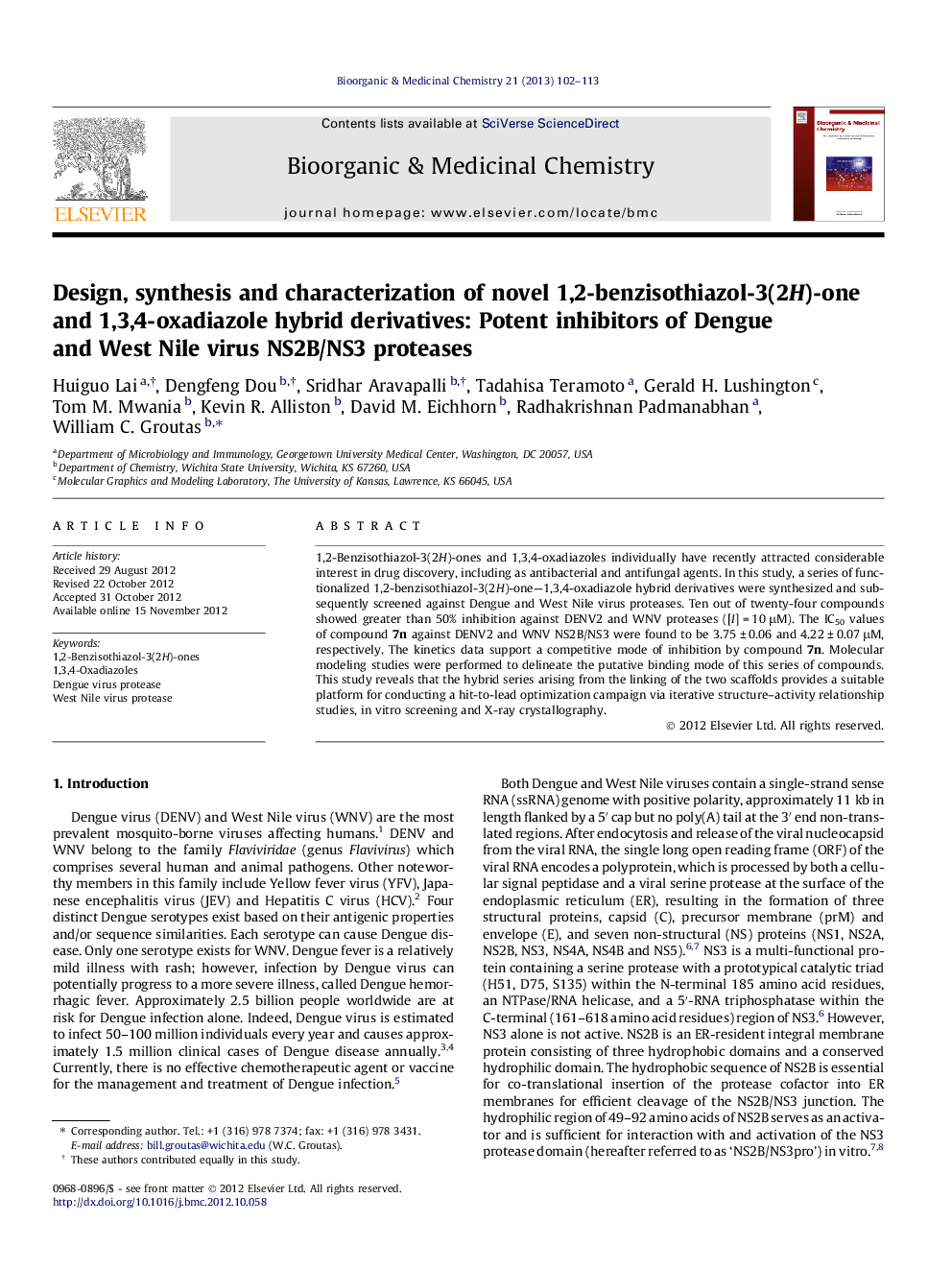| کد مقاله | کد نشریه | سال انتشار | مقاله انگلیسی | نسخه تمام متن |
|---|---|---|---|---|
| 1355668 | 981055 | 2013 | 12 صفحه PDF | دانلود رایگان |

1,2-Benzisothiazol-3(2H)-ones and 1,3,4-oxadiazoles individually have recently attracted considerable interest in drug discovery, including as antibacterial and antifungal agents. In this study, a series of functionalized 1,2-benzisothiazol-3(2H)-one—1,3,4-oxadiazole hybrid derivatives were synthesized and subsequently screened against Dengue and West Nile virus proteases. Ten out of twenty-four compounds showed greater than 50% inhibition against DENV2 and WNV proteases ([I] = 10 μM). The IC50 values of compound 7n against DENV2 and WNV NS2B/NS3 were found to be 3.75 ± 0.06 and 4.22 ± 0.07 μM, respectively. The kinetics data support a competitive mode of inhibition by compound 7n. Molecular modeling studies were performed to delineate the putative binding mode of this series of compounds. This study reveals that the hybrid series arising from the linking of the two scaffolds provides a suitable platform for conducting a hit-to-lead optimization campaign via iterative structure–activity relationship studies, in vitro screening and X-ray crystallography.
A series of functionalized 1,2-benzisothiazol-3(2H)-one—1,3,4-oxadiazole hybrid derivatives (I) were synthesized and shown to inhibit Dengue and West Nile virus proteases. The IC50 values of compound 7n against DENV2 and WNV proteases were determined to be 3.75 ± 0.06 and 4.22 ± 0.07 μM, respectively. The kinetics data support a competitive mode of inhibition by compound 7n. The results of docking studies corroborate some general activity trends observed in the tested compounds.Figure optionsDownload as PowerPoint slide
Journal: Bioorganic & Medicinal Chemistry - Volume 21, Issue 1, 1 January 2013, Pages 102–113